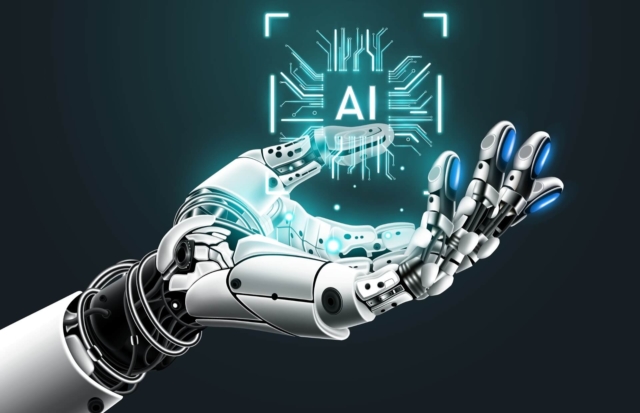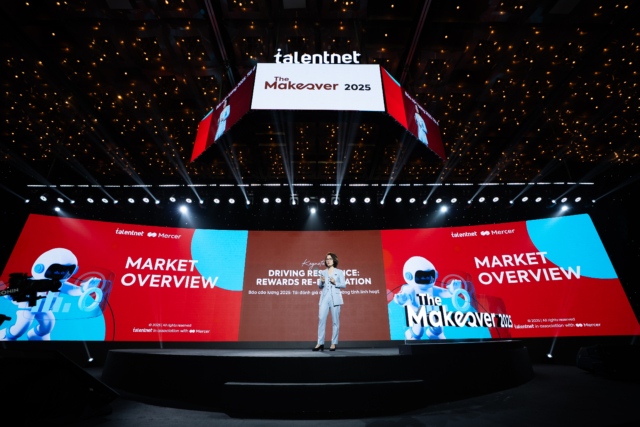How AI in Payroll Enhances Accuracy and Efficiency for Modern Businesses

Aug 13, 2025
49% of employees will look for a new job after just two payroll mistakes. This means your back-office operations directly impact your ability to keep good people. Most leaders don't realize that payroll—often seen as boring admin work—has become a key driver of employee trust and business risk. Traditional payroll eats up resources, demands perfect accuracy, yet still fails too often. These failures don't just cost money. They damage employee confidence and expose your company to expensive compliance problems where AI in payroll solutions can make the difference.

Key takeaways
- AI payroll software cuts processing errors by 78% and completes payroll 65% faster than traditional methods
- Companies using AI in payroll save an average of $2.7 million per year through better accuracy and automated compliance
- Machine learning provides real-time checks and future predictions that turn payroll from a cost into a strategic business tool
- AI chatbots and self-service portals improve employee satisfaction while enabling HR teams to focus on strategic initiatives
AI in payroll means using smart computer systems to handle tasks, study data, and predict what will happen next. It’s not about firing people—it’s about making them more powerful. AI changes payroll from a reactive, simple process into a forward-thinking, strategic tool that drives business insights and competitive advantage.
The transformation begins with eliminating bottlenecks that have constrained payroll operations for decades. Automation in payroll delivers measurable productivity gains that translate directly to bottom-line impact.
Getting rid of calculation mistakes
AI payroll software excels at handling complex pay calculations, tax deductions, and benefit adjustments that previously required extensive human oversight. These automated processes dramatically reduce human error while accelerating payroll cycles from days to hours. The technology handles intricate calculations like overtime rates, shift differentials, commission structures, and variable compensation with mathematical precision that surpasses human capability.
Machine learning algorithms become increasingly sophisticated by learning from historical payroll patterns. They improve at handling edge cases and complex scenarios over time. This means companies can process payroll for diverse employee types—from hourly workers to executives with complex compensation packages—with consistent accuracy and minimal human intervention.
When AI handles routine calculations and data entry, payroll teams can redirect their expertise toward strategic initiatives that drive business value. Instead of spending hours checking calculations and correcting errors, professionals can focus on workforce analytics, strategic planning, and process optimization.
Finding problems in real-time
Machine learning models continuously analyze payroll data to identify irregularities that might indicate errors or fraudulent activity. These systems flag unusual patterns such as abnormally large overtime payments, missing time entries, or compensation amounts that fall outside expected ranges. The technology learns from historical data to establish baseline patterns for each employee and department, making it highly sensitive to deviations requiring attention.
This proactive approach means potential issues are identified and resolved before payments are processed. This prevents costly corrections and maintains employee trust. The system’s ability to cross-reference multiple data sources simultaneously creates a comprehensive validation framework that catches errors human reviewers might miss.
The technology maintains accuracy across large datasets and complex calculations. Every employee receives correct compensation regardless of payroll complexity. AI’s ability to perform consistent, precise calculations without fatigue or oversight gives it a clear advantage over human processing.
Automatic rule updates
AI systems continuously monitor changing tax regulations, minimum wage laws, and labor requirements across all relevant jurisdictions. The technology automatically updates calculation parameters and filing requirements, ensuring organizations remain compliant without manual intervention. This capability proves especially valuable for multinational companies navigating complex regulatory landscapes across different countries and regions.
The system’s ability to implement regulatory changes immediately upon publication eliminates the lag time that often occurs with manual processes. This real-time compliance capability significantly reduces the risk of penalties and legal issues arising from outdated or incorrect payroll practices.
Reducing risk and avoiding penalties
Automated compliance monitoring helps organizations avoid costly legal penalties resulting from missed regulatory updates or incorrect filings. The financial impact of compliance failures extends beyond immediate penalties to include legal fees, audits, and reputation damage that can affect business operations for years.
AI payroll software creates audit trails and documentation that demonstrate compliance efforts, providing valuable protection during regulatory reviews. This comprehensive record-keeping capability supports legal defense and reduces the time and cost associated with compliance audits.

Faster processing cycles
AI-driven automation enables payroll cycles that once required days to be completed in hours, even for large or globally distributed workforces. This acceleration results from the technology’s ability to process multiple tasks simultaneously while maintaining accuracy standards.
The system can handle these processes concurrently:
- Complex calculations for all employee types
- Compliance checks across multiple jurisdictions
- Payment processing and banking integration
- Report generation and distribution
Integration with HR systems, time-tracking platforms, and accounting software creates seamless data flows that eliminate manual data transfer delays. This connectivity ensures information moves efficiently through the entire payroll ecosystem without bottlenecks.
Better employee satisfaction through timely payments
Faster processing enables more frequent or real-time payment options that significantly improve employee financial security and satisfaction. Workers can access their earnings more quickly, reducing financial stress and improving their relationship with the organization.
The reliability and consistency of AI-powered payroll processing builds employee trust and confidence in organizational operational competence. When employees receive accurate, timely payments consistently, it strengthens their engagement and loyalty to the company.
Workforce cost forecasting and optimization
AI analyzes historical payroll patterns to predict future expenses and identify cost-saving opportunities. These insights enable leaders to make informed decisions about hiring, budgeting, and resource allocation based on accurate projections rather than historical averages.
The technology identifies key trends that inform strategic planning:
- Overtime cost patterns and seasonal fluctuations
- Contractor expense optimization opportunities
- Salary progression trends across departments
- Benefits utilization and cost projections
Predictive analytics help companies anticipate seasonal changes, project budget requirements, and identify potential cost-saving opportunities. This foresight enables proactive management rather than reactive responses to workforce cost challenges.
These insights support evidence-based decision-making that aligns workforce investments with business objectives. Companies can quantify the relationship between compensation strategies and business outcomes, enabling a more sophisticated approach to talent management.
Better employee experience and engagement
AI in payroll management transforms the employee-facing aspects of payroll from a source of frustration into a competitive advantage for talent retention.
Smart self-service capabilities
AI-powered chatbots and self-service portals provide instant responses to common payroll questions, dramatically improving employee satisfaction while reducing administrative burden on HR teams. These systems handle complex questions about deductions, benefits, tax withholdings, and payment schedules without human assistance.
The technology learns from employee interactions to improve response accuracy and anticipate common concerns. This continuous improvement ensures the system becomes increasingly valuable over time while requiring less maintenance.
Building trust through reliability
Consistent accuracy and timeliness in payroll processing builds fundamental trust between employees and the organization. When workers can depend on receiving correct compensation on schedule, it eliminates a significant source of stress and demonstrates organizational competence.
The transparency that AI systems provide through detailed breakdowns and easily accessible information helps employees understand their compensation and benefits more clearly. This transparency strengthens the employee-employer relationship and reduces confusion or disputes about compensation.
Organizations comparing manual payroll vs automated payroll systems consistently find that AI-powered solutions provide scalability that grows with their business. This scalability provides particular value for rapidly growing companies that would otherwise need to expand payroll staff significantly.
Beyond direct cost savings, AI-powered payroll systems create competitive advantages through improved employee satisfaction, reduced compliance risk, and enhanced decision-making capabilities. Companies can respond more quickly to market changes, implement new compensation strategies efficiently, and maintain higher employee retention rates.
When organizations manage payroll effectively using AI technology, they gain strategic insights that transform workforce planning. The payroll database integration enables comprehensive data flows that support predictive analytics and real-time decision-making.
Smart leaders recognize that AI workforce development requires more than technology implementation—it demands building the right organizational mindset. The benefits of automating payroll extend to specialized scenarios such as year-end processing, where AI significantly reduces complexity and compliance risks during critical periods.
As we enter a new age of business, leaders must equip themselves for the major changes ahead.
The Makeover 2025: SAILING AHEAD isn’t just a topic of discussion; it’s an invitation to take meaningful action.
We look forward to partnering with your business at this year’s event to redefine the role of leadership in the AI era and build a resilient path forward for your organization.

Solve your HR problems!
6th Floor, Star Building, 33 Mac Dinh Chi, Saigon Ward, Ho Chi Minh city, Vietnam




